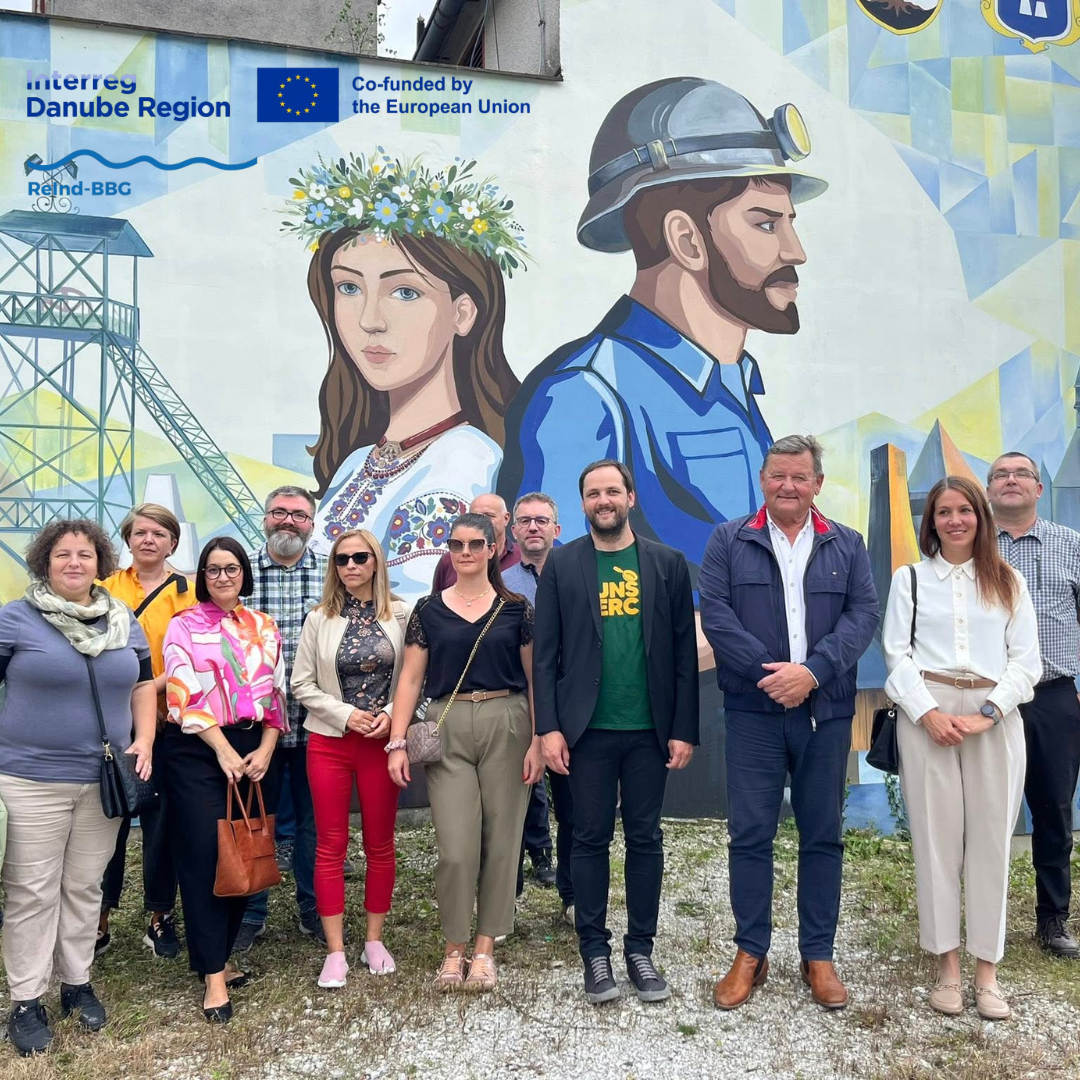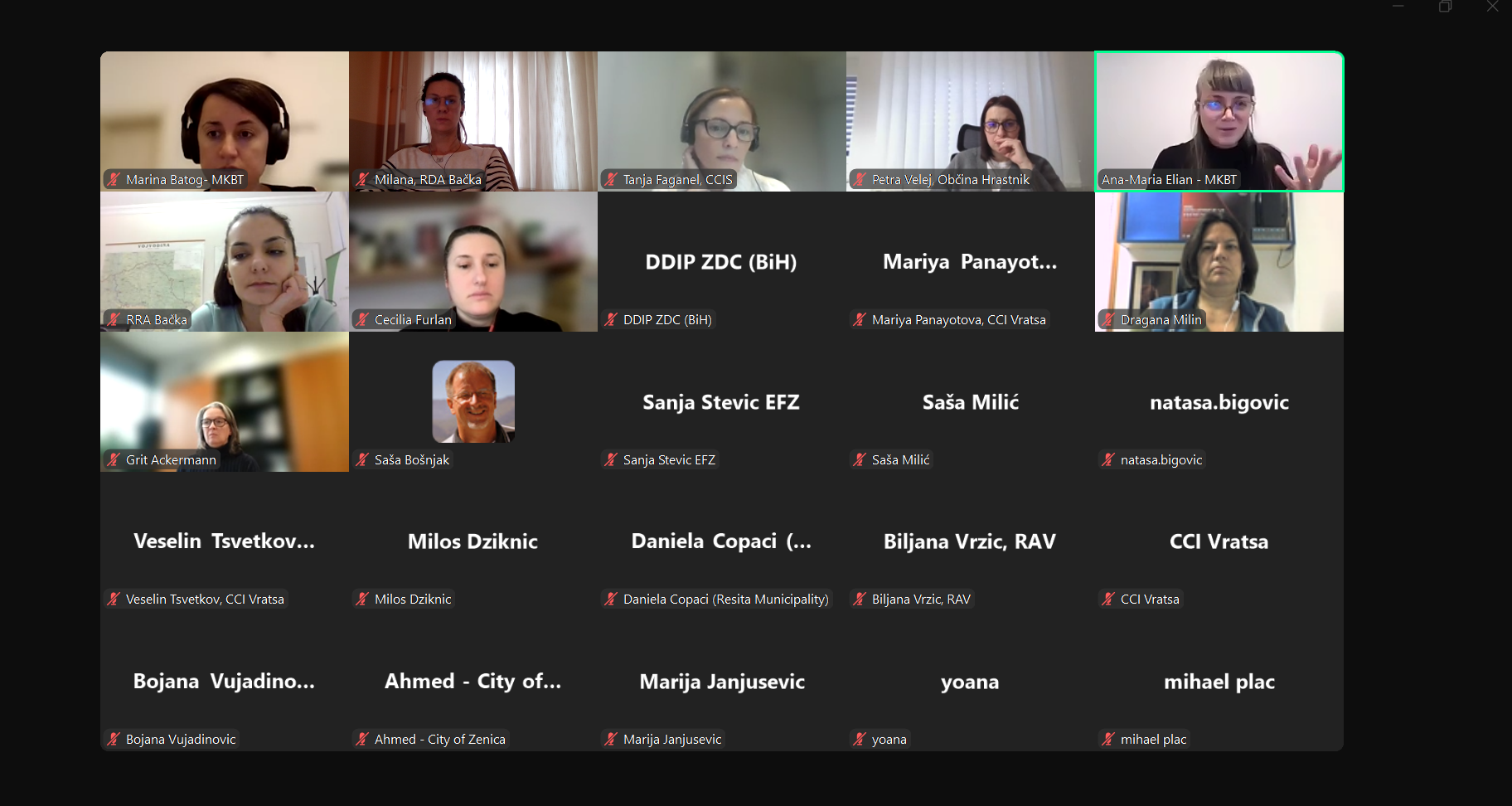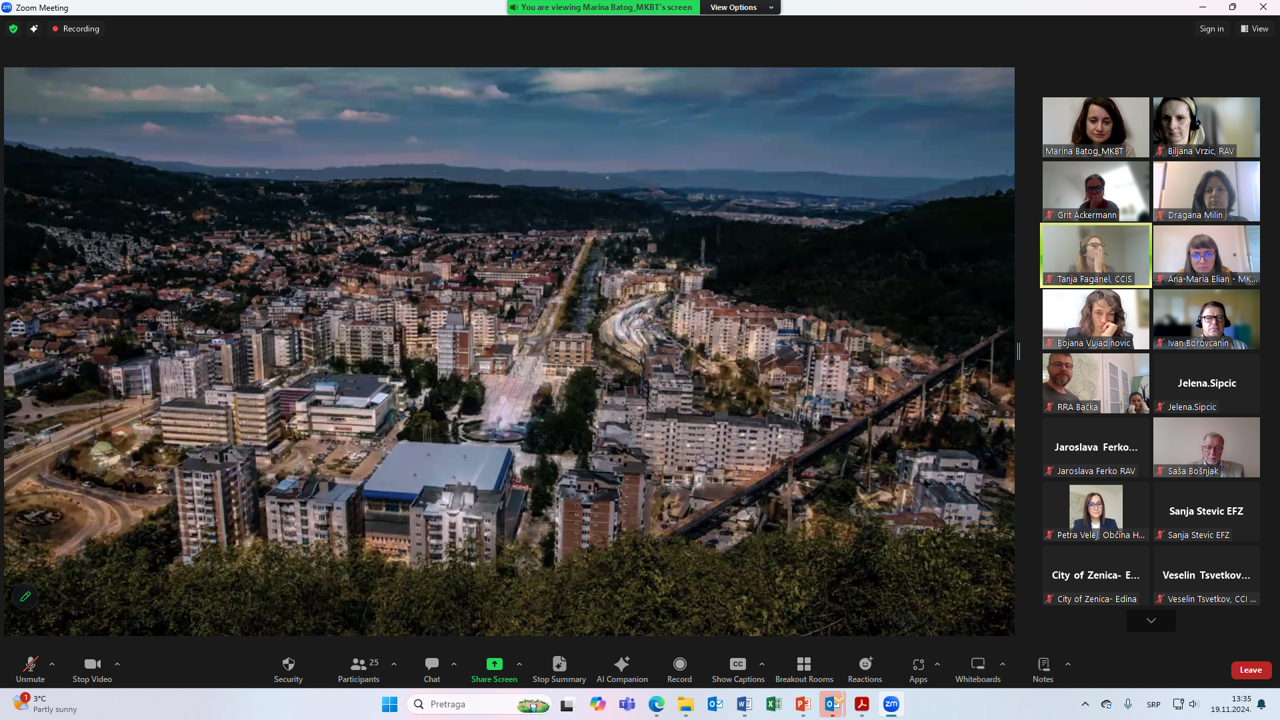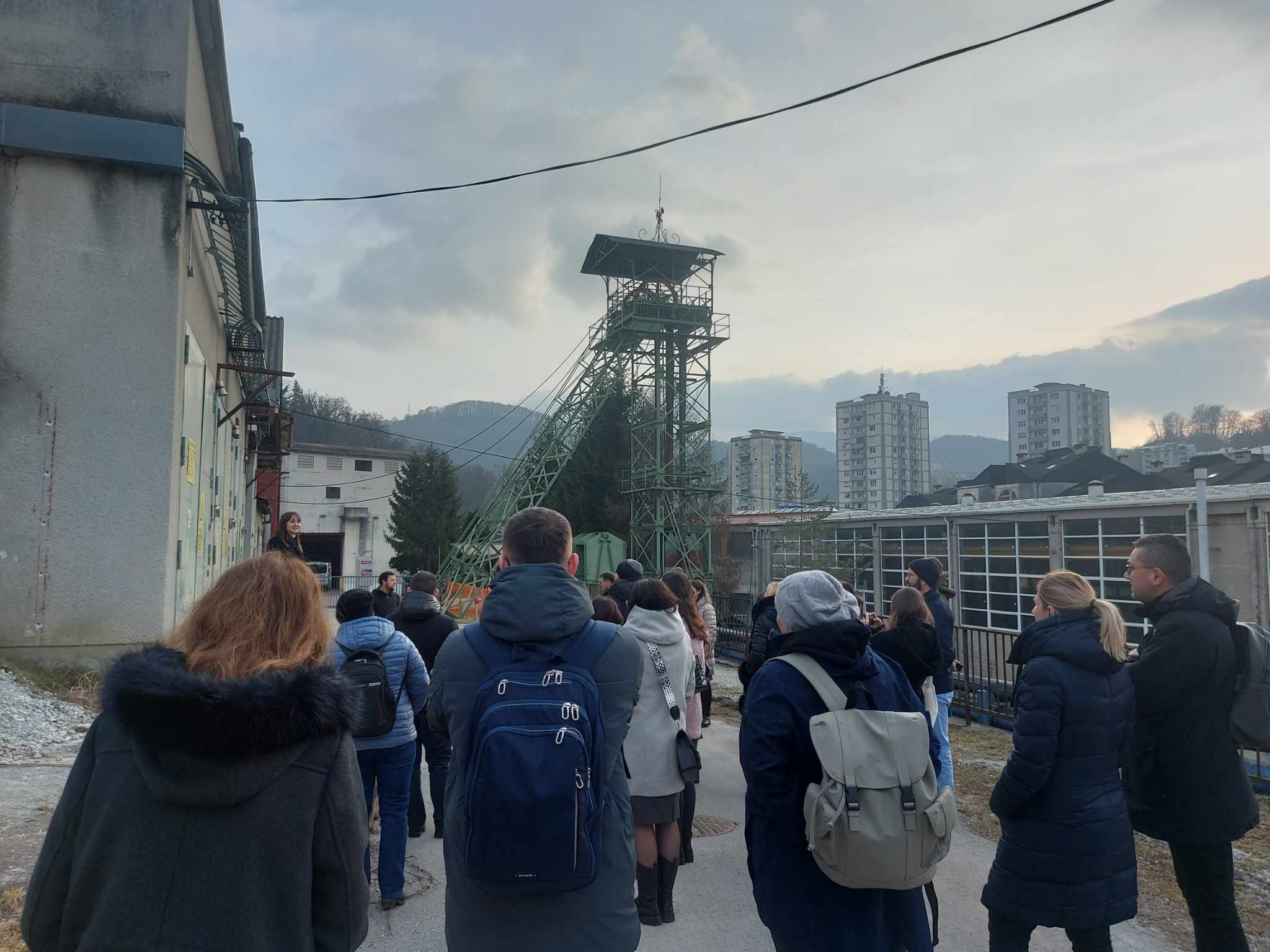
Visiting Hrastnik - the first pilot brownfield location within the project ReInd-BBG
On February 6th, 2024, project partners visited Hrastnik, situated in the Zasavska region of Slovenia. There, they had the opportunity to tour the first pilot brownfield location within the ReInd-BBG project - the infrastructure facilities of the former mining company Trbovlje-Hrastnik.
Hrastnik is renowned for its rich mining history, which flourished economically over 250 years ago and held a pivotal role in the economy of the Zasavska region. During its golden age, the mine stood as a cornerstone of economic vitality in Hrastnik and its surroundings, providing employment to a considerable workforce and bolstering the region’s prosperity.
Nevertheless, as industrial trends shifted and technology advanced, the Hrastnik mine encountered challenges. Fluctuating demand for mining products, coupled with environmental and economic factors, resulted in decreased mining activity and eventual closure in 1995. This closure caused a significant blow to the local economy and community, given the mine's status as a primary source of employment and economic activity in the area. Presently, the Zasavje region exhibits the lowest GDP in Slovenia, with over 52% of its workforce commuting daily to work to the Slovenian capital, Ljubljana, and other major urban centers.
Among the hosts representing the municipality of Hrastnik was Iva Vidovič from the Youth Center Hrastnik, who led the participants on a tour of the administrative building, machine hall, and compressor station of the former mining company Trbovlje-Hrastnik. Furthermore, attendees had the chance to see the grounds of the former mining settlement and the sole preserved dwelling within it, known as the Mlakarjevo residence.
She emphasized that the mine remains a fundamental part of Hrastnik's cultural and industrial heritage, integral to the town's identity. Its historical significance and impact on the local community are diligently preserved by all stakeholders within the municipality through museum exhibitions, presentations, and various cultural and sports events. The organization she represents, the Youth Center Hrastnik, makes significant efforts to provide young people in the municipality with space and opportunities for learning, socializing, and active participation in community life, all aimed at a more fulfilling life and staying in Hrastnik.
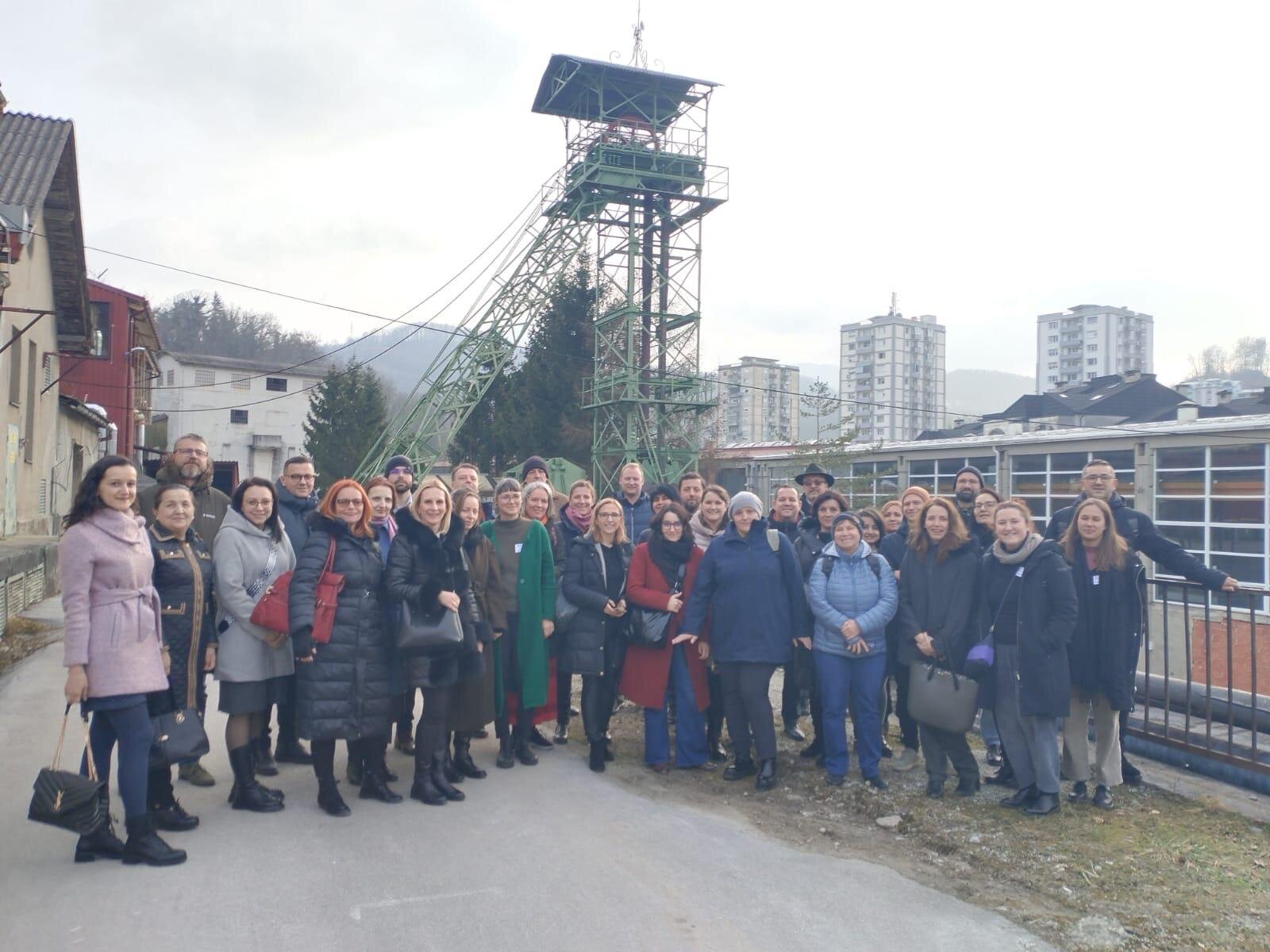
Furthermore, the visit was honored by the presence of the Mayor of Hrastnik Marko Funkl who informed the attendees about the initiatives and endeavors of the local authorities aimed at diversifying the economy and discovering fresh avenues for growth to offset the impact of the mine closure. The main task facing the municipality is the remediation of degraded areas that occupy a significant part of Hrastnik. These areas necessitate specific remediation measures and a comprehensive transition plan to facilitate their beneficial utilization while concurrently fostering the development of the rural area focusing on preserving the mining tradition and developing the agricultural and industrial sectors.
He underscored that Hrastnik is persistently advancing its glass and chemical industries, leveraging abundant technical expertise from its history. Moreover, he highlighted the rising presence of innovative small and medium-sized enterprises in Information Technology and new materials sectors, which are not only creating more job opportunities but also catalyzing a fresh entrepreneurial renaissance within the locale.
The ReInd-BBG project primarily targets local self-governments with degraded land contaminated by human activities, encompassing former industrial sites and settlements commonly referred to as brownfields. The objective is to rejuvenate these neglected areas for new industrial and other purposes. Six local self-governments from six countries are part of the project – the Municipality of Hrastnik (Slovenia), the City of Zenica (Bosnia and Herzegovina), the City of Sombor (Serbia), the Municipality of Reşiţa (Romania), the Municipality of Vratsa (Bulgaria), and the Municipality of Nikšić (Montenegro).
The local self-governments will directly benefit from the project through practical and strategic assistance in designing and implementing reindustrialization initiatives within their communities. This approach adheres to the principle that "brownfield is better than greenfield," emphasizing the prioritization of brownfield revitalization in territorial strategies and planning. The project will not only have a positive impact on local government but also on the local community by enhancing the city's economic vitality, its appeal, and the overall quality of life for its residents.
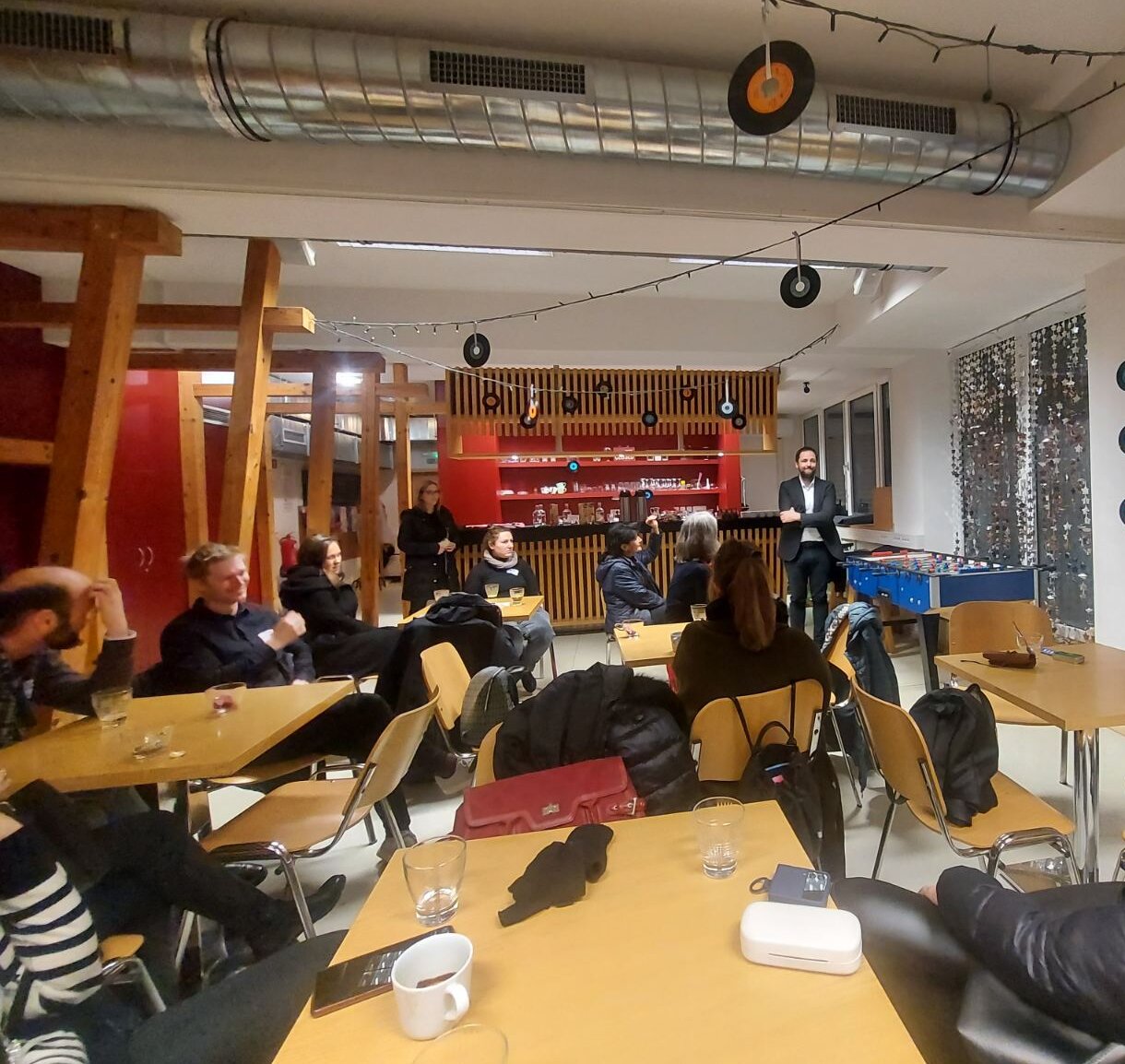
News & Events
Read the most recent updates and explore the upcoming events.


